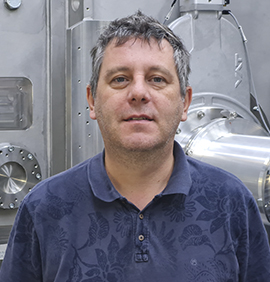 Palestra: Imaging Hierarchically NanoPorous Catalysts with Coherent x-ray DiffractiveImaging: New Opportunities at Sirius the Brazilian Ultra-Low Emittance Synchrotron Facility
Palestra: Imaging Hierarchically NanoPorous Catalysts with Coherent x-ray DiffractiveImaging: New Opportunities at Sirius the Brazilian Ultra-Low Emittance Synchrotron Facility
Resumo da Palestra: Novel 4 th generation synchrotron facilities and X-ray free-electron lasers are leading to the development of new X-ray methods of microscopy. Among these techniques, coherent diffractive imaging (CDI) is one of the most promising, enabling nanometre-scale imaging of non-crystallographic samples. Indeed, new visualisation methods can be used to resolve structures at resolutions that were previously unachievable. Here, I will present the application of ptychographic X-ray computed tomography for the visualisation of soft matter with a resolution of ~26 nm over large fields of view. Thanks to the high-penetration depth of the X-ray beam, we visualised the 3D complex porous structure of polymer hollow fibers in a non-destructive manner and obtain quantitative information about pore size distribution and pore network interconnectivity across the whole membrane wall. The non- destructive nature of this method, coupled with its ability to image samples without requiring modification or a high vacuum environment, makes it valuable in the fields of porous- and nano-material sciences enabling imaging under different environmental conditions. Moreover, the very recent implementation of plane-wave CDI enabled to image a 10 micron-size MCM22 zeolite crystal, three-dimensionally. The total experiment time was less than 2 hours with a resolution close to 50 nm. With further improvements, the temporal resolution of plane-wave CDI will pave the way to novel in situ time-resolved and in operando nanotomography studies exploring real-time phenomenon, spanning chemistry, biology, catalysis and materials research fields. These methods are implemented at the Cateretê beamline at the SIRIUS 4th generation synchrotron source based multibend achromat lattice.





